Recent high-profile incidents of scrap-metal salvors illegally targeting the sunken remains of Second World War warships have drawn attention to the vulnerability of historic shipwrecks around the world.
The catastrophic damage caused to these wreck sites, which are often the last resting places of their crews, has drawn public anger and in many cases triggered the release of polluting fuel and ammunition into the environment.
Protecting historic wrecks has proved challenging for flag states including the UK, responsible for Royal Navy war graves worldwide, and the countries in whose waters these wrecks now lie. The often-repeated reason why salvors target such wrecks is the ‘high market value’ of low background steel, which is needed, according to popular media stories, for “medical purposes”.
This article focuses specifically on the science behind these statements and considers their validity. Is there a real scientific requirement for low background steel? Are salvors specifically targeting wrecks for this resource or another reason?
By Laurence Jones, Jessica Berry and Giles Richardson.
What is Pre-nuclear and low-background steel?
The association between pre-nuclear steel and its salvage from military ships for its low background properties goes back many years. Most well-known is its use in Whole-Body Counters (WBC), facilities widely used in the nuclear industry to monitor staff for accidental intakes of radioactive isotopes, where the ability to measure low levels of radioactivity is important for workplace safety assurance.
HMS Vanguard, in August 1960 at Shipbreaking Industries, Faslane.
The DRPS Whole Body Counter (WBC) (built in 1963) contains almost 40 tons of legally salvaged steel from HMS Vanguard
In this application, the pre-nuclear steel acts to shield radiation detectors housed within the steel chamber from cosmic radiation, and Naturally Occurring Radioactive Material (NORM). Aside from any discussion around the steel being pre-nuclear, steel is a good shield of radiation, and the armour of battleships around the relevant period (using battleships constructed c1904-1946) was of sufficient thickness (approximately 15 cm) to significantly reduce the radiation background.
When measuring low levels of radioactivity, one needs to ensure that materials being introduced do not themselves contain (usually man-made) radioactive contamination. Steel which meets this criterion is called low background steel, with pre-nuclear steel being one source of this low background material, having been made prior to the widespread use of man-made radioactive material.
Why is there radioactive contamination in steel?
It is well documented that recently manufactured steel can contain low levels of radioactive contamination (see [1] and [2]). There are several potential origins of this contamination, with reference [3] providing a more in-depth discussion. The most common source is believed to be the accidental introduction of radioactive material (from medical and other sources) into the steel recycling stream, as recycled steel forms a significant fraction of manufactured steel.
While the release of radioactive material into the atmosphere from nuclear weapons testing is often suggested as a cause of this contamination, actual measurements of radioactive materials in steel which can be attributed to weapons tests have not been found by these authors. In any case, the levels of atmospheric contamination are much lower today than the 1960s.
Reported measurements of airborne Cs-137 concentration at Chilton, Oxfordshire, UK, from 1953 to 2022. Results show a significant fall since after the first signing of the Partial Text Ban Treaty in 1963 (derived from [4], [5], [6], [7] and [8]).
Uses for salvaged pre-nuclear steel
If salvaging of pre-nuclear steel is a driver for this unauthorised salvage, we would expect to see a significant marketplace for it. Some suggested applications from the open media are discussed below, however in each case we assess there is no evidence supporting the suggestion that pre-nuclear steel has been used:
- The most common claim is that the salvaged material is used in ‘medical devices’. What these medical devices are is not defined, and it is considered most likely that it is being used as a technically accessible term to refer to WBCs. While there is plenty of evidence of WBCs historically being built with pre-nuclear steel, the authors were unable to find any evidence of pre-nuclear steel being used in any WBCs built since the turn of the millennium. Rather they tend to use other materials for shielding, such as Reference [9], where alternative source of low background steel are used.
- A common use of low background steel is in physics experiments where very high precision measurements are required, such as dark matter experiments in Italy [1] and neutrino experiments in China [2]. Both these examples report using low background steel, but in both cases this steel is not pre-nuclear. The Italian dark matter experiment has instead assayed a number of commercial steel sources, and elected to use the steel with the lowest contamination levels. The Chinese neutrino experiment has used specially manufactured low-background steel.
- Some authors report on rumours that NASA satellites have used steel from Scapa Flow [10], but there is no primary evidence that this is the case.
- The activity levels of contamination in steel is so low that any claims that standard radiation detectors require low background steel (as claimed in [11] for example) are not technically credible, as until shielding is introduced (for example, as with the WBCs discussed in this article) the background for all instruments will be dominated by cosmic radiation and NORM.
In summary, while other applications may exist, there is no primary evidence of current wide-spread demand for pre-nuclear steel.
How would salvaged steel enter the market.
The pre-nuclear steel that has been used in WBCs was, when salvaged, already of a convenient physical size that allowed it to both shield against radiation, and physically construct a chamber. Hence it can be usefully employed in that application, regardless of its low background properties.
In many other applications the steel would need to be reprocessed to allow it to be machined to the required dimensions. Such a process is usually done through the steel-recycling process, in which it would, by default, be mixed with other sources of steel. In this case any contamination in these other sources of steel would become distributed within the new steel, and hence the steel could no longer be considered low background.
In addition, one common theme for most sites which use low background steel is that the origin of this steel is usually well known. These users would be reluctant to be involved with suppliers where the origin of pre-nuclear steel was either not specified, or was known to be of controversial origin.
Summary with respect to maritime salvage
It is extremely difficult to say with absolute certainty whether pre-nuclear steel being salvaged now is being used in scientific measurements for its low background properties. But consideration of the facts discussed above lead the authors to conclude that it is extremely unlikely. At least if some steel is used for this purpose this is circumstantial benefit, rather than the primary reason.
This is primarily because (a) no significant demand for low background steel has been identified, (b) where that demand has been identified it is currently meet by alternative sources other than pre-nuclear steel (c) most users of low background material would be reluctant to use material of uncertain origin and (d) the process stream for this material to enter the market is unclear.
About the Authors
Laurence Jones has been working in the field of radiation detection for approximately twenty years. Initially with the Defence Science and Technology Laboratory, and now with the Atomic Weapons Establishment. His areas of work include individual monitoring (such as with the WBCs in this article), radiation dosimetry, radiation detection and radiation transport modelling.
Jessica Berry FSA is CEO of the Maritime Archaeology Sea Trust (MAST), a maritime archaeologist, co founder of the Maritime Observatory and former journalist with UK broadsheets.
Giles Richardson is Chief Operating Officer at MAST and senior analyst with the Maritime Observatory.
Bibliography
| [1] | X. Collaboration, “Material radioassay and selection for the XENON1T dark matter experiment,” European Physics Jornal C, vol. 77, 2017. |
| [2] | G. Hussain et al, “Assay of low-background stainless steel by smelting for the neutrino experiment at Jinping,” Nuclear Instruments and Methods in Physics Research Section !: Accelerators, Spectrometers, Detectors and Associated Equipment, vol. 881, pp. 65-71, 20118. |
| [3] | Sandia National Laboratories, “Co-60 Contamination in Iron and Steel. RPM Cargo Report. SAND2013-6628P,” 2013. |
| [4] | United Kingdom Atomic Energy Authority Harwell., “Radioactive fallout in air and rain: results to end of 1979,” H.M. Stationary Office, 1980. |
| [5] | “REM data bank – Year 1984. European Commission, Joint Research Centre (JRC) [Dataset],” 1985. [Online]. Available: https://data.jrc.ec.europa.eu/dataset/jrc-10117-10001. [Accessed January 2024]. |
| [6] | Department of Energy and Climate Change, “Monitoring of Radioactivity in Air and Rainwater in the UK. Annual Results Report 2011”. |
| [7] | Public Health England, “Environmental Radioactivity Surveillance Programme: Results for 2014”. |
| [8] | “Radioactivity in food and the environment (RIFE) reports,” [Online]. Available: https://webarchive.nationalarchives.gov.uk/ukgwa/20231023170654/https:/www.gov.uk/government/publications/radioactivity-in-food-and-the-environment-rife-reports. [Accessed January 2024]. |
| [9] | “Mirion ACCUSCAN,” [Online]. Available: https://www.mirion.com/products/technologies/spectroscopy-scientific-analysis/in-vivo-systems/2260-horizontal-bed-whole-body-counter. [Accessed January 2024]. |
| [10] | K. Chapman, “Chemistry world,” December 2018. [Online]. Available: https://www.chemistryworld.com/podcasts/low-background-steel/3009874.article. [Accessed January 2024]. |
| [11] | “The Generalist Academy,” July 2020. [Online]. Available: https://generalist.academy/2020/07/30/pre-nuclear-steel/. [Accessed January 2024]. |
| [12] | C. Moskowitz, “Scientific American. Ancient Roman Metal Used for Physics Experiments Ignites Science Feud,” December 2013. [Online]. |


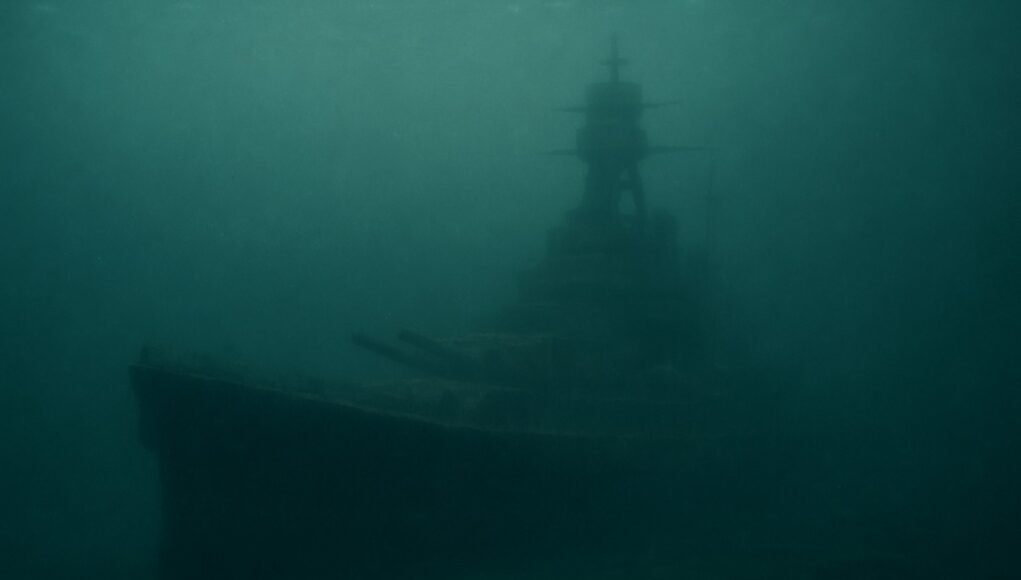

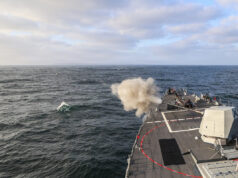
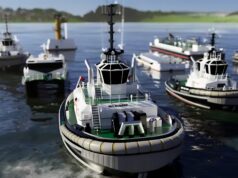
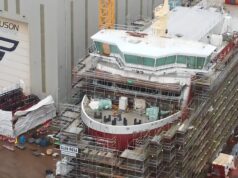
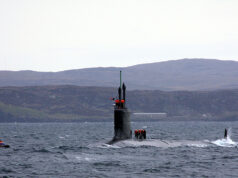


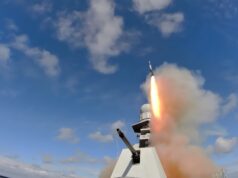
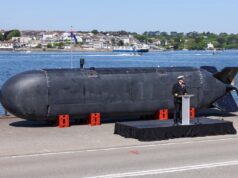
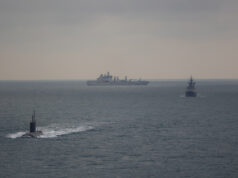
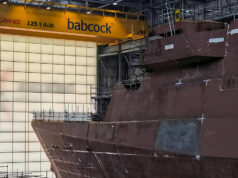

No.
“The journey from A to B often takes you round the houses”
But you get there eventually.
A properly researched and referenced article.
To set the standard.
I’m very familiar with one WBC which was *officially* salvaged pre nuclear test steel.
Great article. Got to ask if more could be done to protect these personally emotive sites, especially at this time when we remember those lost in conflicts, from the impact of sites targeted by these scavengers.
I can remrmbet watch a tv article back in the 1980s or possibly v early 90s that discussed Scapa Flow and spoke with people diving there as well as those protecting it and discussed how small amounts of metal had been salvaged for use in medical equipment. I’m pretty sure that part was illustrated with film of scalpels and other implements in a thwarted environment. I could never understand quite why it would be important to have a scalpel or callipers made of that type of steel…….(it obviously wasn’t then!)